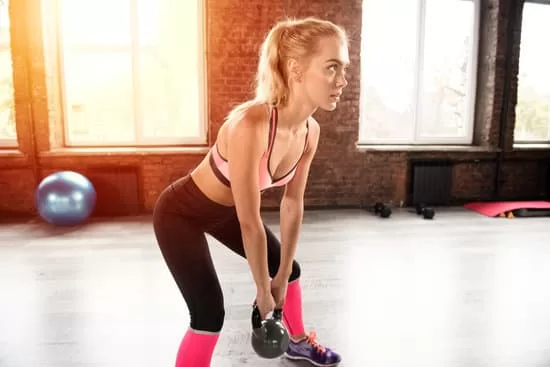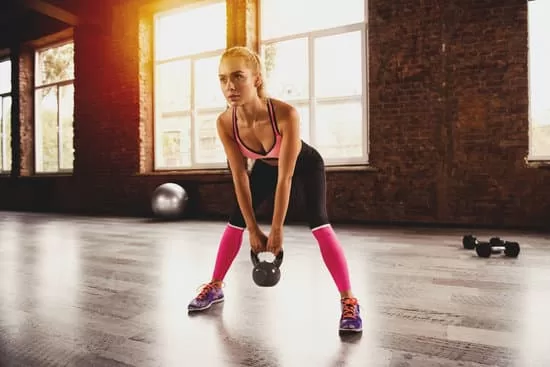Sports & Wellness, Workout
Part 1: Understanding Caloric Burn and Fun Activities
Burn Calories with Pleasant Activities
Part 1: Understanding Caloric and Fun Activities
Welcome to the first installment of our series on how to incorporate pleasant activities into your life to help burn calories effectively. In today’s fast-paced world, maintaining an active lifestyle is crucial for good health, but the thought of hitting the gym or following a strict workout regimen can often seem daunting. The good news is that there are myriad ways to stay active that don’t involve a treadmill or weight room. In fact, choosing activities that you genuinely enjoy can not only help you burn calories but also improve your mental health and overall quality of life.
In this post, we will explore the fundamentals of how our bodies burn calories and delve into why choosing enjoyable activities is an essential strategy for sustainable health. Understanding these concepts will help you make informed choices about how to incorporate fun and fulfilling physical activities into your daily routine, turning what might otherwise be a chore into an eagerly anticipated part of your day.
To set the stage, let’s first understand what calories are and how they function within our bodies. We’ll examine the mechanisms of caloric burn, including basal metabolic rate, the thermic effect of food, and energy used during physical activity. We’ll also discuss the various factors that affect how many calories you burn, such as metabolism, age, body composition, and the intensity of the activities you choose.
Equipped with this knowledge, we’ll then shift our focus to the psychological and physical benefits of engaging in enjoyable activities. From reducing stress to enhancing cardiovascular health, the advantages of finding joy in movement are profound and far-reaching.
By the end of this post, you’ll have a clearer understanding of how integrating fun, enjoyable activities into your lifestyle can not only help you burn calories but also bring a greater sense of joy and satisfaction to your daily life. Let’s embark on this journey together, rethinking exercise as a joyful pursuit and transforming the way we approach physical activity.
1. Basics of Caloric Burn
When it comes to maintaining or achieving a healthy weight, understanding how your body burns calories is crucial. Calories are essentially the fuel that powers every action your body performs, from intense exercise to simply breathing. Let’s break down the essential components of caloric burn and the factors that influence it.
What Are Calories?
Calories are units of energy derived from the foods and drinks we consume. Our bodies require this energy to perform every function and activity, from the most basic cellular processes to complex physical movements. Whether it’s nutrients powering your brain or your muscles, calories provide the necessary energy to keep you alive and active.
How Do We Burn Calories?
Our bodies expend energy in several key ways:
-
Basal Metabolic Rate (BMR): This is the amount of energy your body needs at rest to maintain vital functions such as breathing, circulating blood, and cellular growth. BMR accounts for about 60-75% of daily calorie expenditure in most people and varies based on age, sex, weight, muscle mass, and genetic factors.
-
Physical Activity: This includes all movements from fidgeting to formal exercise. The calories burned here vary widely depending on the frequency, duration, and intensity of the activity. This is the most variable component of calorie burning and the one most within your control.
-
Thermic Effect of Food (TEF): Also known as diet-induced thermogenesis, this refers to the energy expended to digest, absorb, and metabolize food nutrients. It accounts for about 10% of the calories you consume and can be slightly higher with a protein-rich diet as proteins require more energy to metabolize.
Factors Influencing Caloric Burn:
-
Metabolic Rate: Everyone’s metabolism operates at a different rate, influencing how quickly or slowly they burn calories. Factors such as genetic background, age, hormonal balance, and body composition (muscle-to-fat ratio) significantly affect metabolic rate.
-
Body Composition: Muscle tissue burns more calories than fat tissue, even at rest. Therefore, individuals with more muscle mass typically have a higher BMR.
-
Intensity and Duration of Activity: Generally, the more vigorous the activity, the more calories you burn. Similarly, the longer you engage in an activity, the more energy is consumed.
-
Age: As we age, our metabolic rate generally slows down, which is often due to a loss of muscle mass and changes in hormonal and neurological processes.
-
Gender: On average, men tend to have a faster metabolism than women due to having more muscle mass, larger bones, and less body fat.
Understanding these mechanisms is fundamental when it comes to managing your weight or body composition effectively. With this knowledge, you can better tailor your activities and diet to suit your specific energy needs.
In the next section of our series, we will explore the psychological and physical benefits of engaging in activities that are enjoyable and how they can positively affect your motivation, adherence to physical activity, and overall quality of life. By aligning your exercise routines with activities that bring you joy, you can transform the way you think about fitness and health, making it a more integral and enjoyable part of your everyday life.
2. Benefits of Enjoyable Physical Activities
Having established the basics of how calories are burned, let’s now explore why engaging in enjoyable physical activities is not only beneficial for your physical health but can also significantly enhance your psychological wellbeing. This section discusses how the pleasure derived from certain activities can lead to a more active lifestyle, sustain motivation, and provide broader health benefits.
The Power of Enjoyment in Exercise
Increased Long-term Adherence:
Research consistently shows that when individuals enjoy their exercise routine, they are more likely to stick with it long-term. Enjoyment acts as an intrinsic motivator, meaning you’re driven by the pleasure of the activity itself rather than external rewards or pressures. This intrinsic motivation can lead to more consistent and prolonged engagement in physical activity.
Stress Reduction:
Participating in activities you love can be a great stress reliever. Whether it’s the rhythmic motion of swimming, the concentration required for yoga, or the exhilarating feeling of playing a team sport, enjoyable activities can help distract from daily worries and reduce overall stress levels. This psychological relief is partially attributed to the release of endorphins, often referred to as the body’s “feel-good” chemicals, which can improve mood and decrease anxiety.
Enhanced Mental Health:
Enjoyable activities contribute to better mental health by boosting self-esteem and confidence. When exercise is fun, it no longer feels like a chore; instead, it’s something to look forward to, significantly impacting your overall mental health. Studies have shown that regular physical activity can be as effective as psychotherapy for mild to moderate depression, thanks to the neurological effects of regular exercise.
Social Connections:
Many enjoyable physical activities also provide opportunities to connect with others, which can be fulfilling and enriching. Social interactions in activities like team sports, dance classes, or hiking groups offer social support, enhance feelings of belonging, and can be very uplifting for one’s mental health.
Examples of Enjoyable Activities That Burn Calories
-
Dancing: Whether it’s ballroom, hip hop, or salsa, dancing is not only an excellent cardiovascular workout but also mentally stimulating and socially engaging.
-
Gardening: Gardening can be surprisingly physical, involving bending, lifting, and stretching, all of which help tone muscles and burn calories, while the connection with nature and visible results of your labor provide psychological rewards.
-
Playing Sports: Sports such as tennis, basketball, or soccer require quick bursts of energy that improve cardiovascular health, coordination, and flexibility, and playing with others can enhance the fun and competitive spirit.
-
Yoga: While often viewed as a relaxing and meditative practice, yoga can also be an intense physical workout that builds strength, endurance, and flexibility, contributing to both mental and physical well-being.
-
Hiking: Hiking not only burns significant calories due to the challenging terrain and longer duration but also provides mental relaxation as you immerse yourself in the beauty of nature.
Making Activities More Enjoyable
- Mix It Up: Keep your routine interesting by trying new activities or varying your current regimen to include different types of exercises and challenges.
- Set Fun Goals: Instead of traditional fitness goals like weight loss or muscle gain, set goals to achieve a new skill, reach a new destination, or improve your technique.
- Involve Friends or Family: Activities can become more enjoyable when shared with others. Plus, having a workout buddy can increase accountability and keep motivation high.
By incorporating enjoyable physical activities into your lifestyle, you enhance your ability to maintain an active routine, which is crucial for both your physical and mental health. Engaging in such activities transforms exercise from a mundane task into a pleasurable pastime, enriching your life and enhancing your overall health.
3. Identifying What You Love
In the pursuit of burning calories and improving health, the importance of identifying activities that you genuinely enjoy cannot be overstated. Engaging in activities that you love not only ensures consistency in your fitness regimen but also enhances your overall enjoyment of life. Here’s how you can identify and integrate these enjoyable activities into your routine.
Exploring Your Preferences
Reflect on Past Enjoyments:
Think back to your childhood or recent past. What activities did you enjoy? Perhaps you loved climbing trees, dancing, or playing a certain sport. Revisiting these past joys can provide clues to activities you might enjoy as an adult.
Experiment with Different Activities:
The best way to discover what you truly enjoy is by trying different things. Join a class, attend a workshop, or try out new sports equipment. Experimenting can help you discover hidden passions and diversify your exercise routine.
Consider Your Personality:
Your personality can play a big role in determining what types of activities you might enjoy. If you’re a social butterfly, team sports or group fitness classes might be more enjoyable than solo activities. Conversely, if you prefer solitude, activities like running, swimming, or yoga might be more appealing.
Factors to Consider
Convenience and Accessibility:
The best activity for you is often the one that is most accessible and convenient. If it’s easy to incorporate into your daily routine, you’re more likely to stick with it. Consider the location, time, and cost associated with the activity when making your choice.
Physical Limitations:
Be mindful of any physical limitations or health issues you might have. Choose activities that accommodate your body’s needs and consult with a healthcare provider if necessary to find suitable options that won’t exacerbate any conditions.
Seasonal Variations:
Some activities may be seasonal, especially outdoor ones like skiing or swimming. Having alternatives for different seasons can help maintain an active lifestyle year-round.
Tips to Develop a Love for New Activities
-
Set Realistic Expectations:
When trying something new, keep your expectations realistic. Mastery takes time, and it’s important to allow yourself to be a beginner. Celebrate small achievements along the way to stay motivated. -
Make It Social:
Involve friends or family in your activities. Sharing an activity can make it more enjoyable and provide a support system to keep you motivated. -
Combine Activities with Other Interests:
If you enjoy music, you might try activities that incorporate music, such as dance classes or rhythmic aerobics. If you love nature, consider outdoor activities like hiking, cycling, or kayaking. -
Keep a Journal:
Record your experiences with different activities. Note how you feel during and after each one. Over time, this journal can help you identify which activities are truly enjoyable and worth pursuing further.
By exploring various activities and considering how they align with your personality, lifestyle, and physical needs, you can discover enjoyable ways to stay active. Remember, the goal is to find joy in movement, transforming the way you view exercise and integrate it into your life. This approach not only enhances your physical health but also enriches your mental and emotional well-being, making exercise a pleasurable and anticipated part of your daily routine.
Embracing Joy in Your Fitness Journey
In this first part of our series on burning calories through pleasant activities, we’ve explored the foundational aspects of how our bodies expend energy, the significant benefits of engaging in enjoyable physical activities, and practical strategies for discovering and incorporating activities you love into your routine. Understanding these elements not only enhances your knowledge of physical health but also empowers you to make exercise a delightful and integral part of your life.
We’ve learned that the key to a sustainable and effective fitness regimen is not just about the calories burned but the enjoyment experienced. By focusing on activities that bring joy, you can transform the often-dreaded concept of exercise into a source of pleasure and satisfaction. This shift in perspective can dramatically improve your motivation, adherence, and overall mental health, leading to a healthier and happier you.
As we move forward, remember that the journey to finding what you love in fitness is personal and evolving. What works for you today might change as you grow and explore new aspects of physical activity. The goal is to keep an open mind and a willing spirit to try new things, adjust as necessary, and most importantly, enjoy the process.
In the upcoming posts, we will dive deeper into specific enjoyable activities that can fit into various lifestyles and how you can integrate these activities seamlessly into your daily routine. We’ll also discuss how to balance these fun exercises with your dietary choices and other lifestyle factors to achieve and maintain optimal health.
Thank you for joining us in this exploration of how to burn calories with pleasant activities. Stay tuned, stay active, and above all, find joy in every step of your fitness journey.
Part 3: Social and Recreational Activities for Enjoyable Caloric Burn
Part 3 explores how engaging in group sports, dance, and adventure activities not only boosts [...]
Feb
Part 2: Low-Intensity Activities That Burn Calories
Part 2 of our series explores low-intensity activities like walking, household chores, and leisure hobbies [...]
Feb





